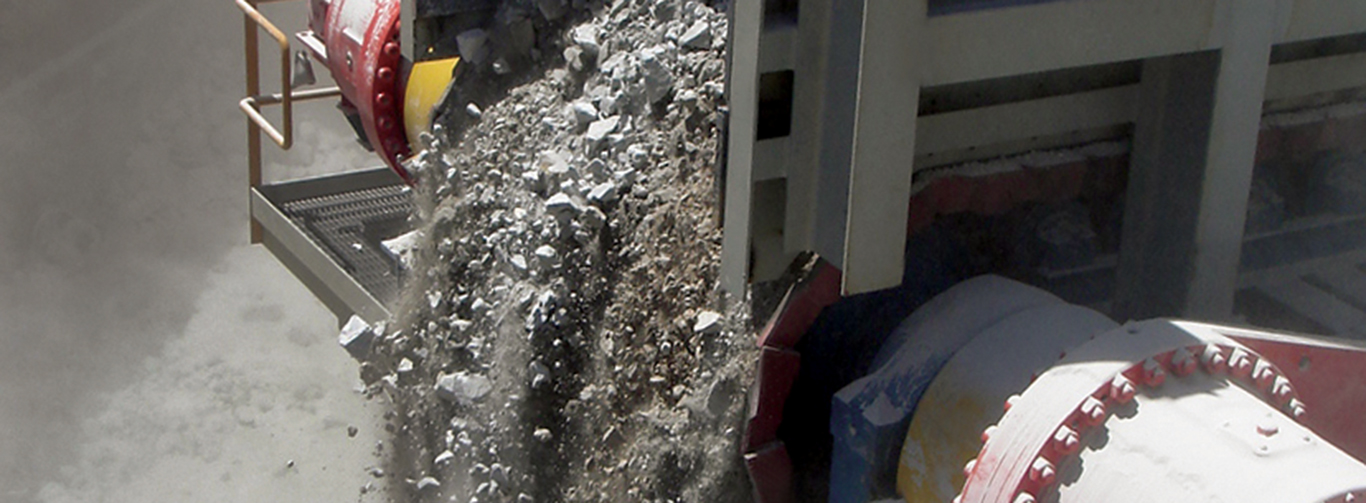Limited capacity and excessive shutdowns as a challenge
Metso took part in one of the improvement projects by replacing the pans on the main feeder of the processing line with improved parts. Installed in the Plant 2 crushing sector, the apron takes in the ROM and feeds the crusher. Because of its role, the apron is under constant monitoring, and Kinross had already determined that changes were needed. The first change was to increase the apron’s production. The second, directly related to the first, was to increase the service life of the return rollers, which, since the sidewalls on the existing pan were very thin, led to constant shutdowns of the equipment. The challenge was to replace the pans and the other parts as quickly as possible and without affecting the mine’s production goals.
“The biggest problem was scheduling all the activities. We invested nearly 150 hours of work,” explains Alexandre de Oliveira, the Kinross mechanical engineer who coordinated the process. “We submitted to Metso the problems we were having with our equipment and they suggested most of the improvements that were approved,” he notes.
According to Oliveira, the work was done by in-house personnel with technical supervision by Metso. The replacement operation, designed down to the millimeter, preserved the material of the original pans (manganese steel) but involved a totally new part design, developed specifically for Kinross by Metso, using taller lifting bars and an optimized profile. In order to increase the service life of the return rollers, the design also involved thicker sidewalls of the pans, which provided better pressure distribution on the roller surface. In addition, Metso developed a new return roller made of wear-resistant material, thus offering a longer service life.
20% increase in capacity
The results of the replacement show that the work really did pay off. Presently, with a rated capacity of 7,800 tons/hour, the feed capacity has increased 20% and Kinross is preparing to measure other effects.
“Since the installation done in May 2014, we have not yet been able to assess, in an overall basis, the gains in service life on the load rollers and on the pans themselves,” notes Oliveira, adding that, in addition to the pans, other changes were also implemented. Among the other modifications, he cites the change in the angle of the bearing housings, as well as alterations in the design of the hub and the drive shaft assembly. “We have a cooperative relationship whereby Metso introduces and offers to implement the innovations it develops for its products,” Oliveira sums up.
“We at Metso are constantly improving our products, and the apron feeders are no exception. These innovations lead to various benefits, such as increased reliability and production, as in the case of the improvements applied to Kinross’s machine, built in 2007 and upgraded with these innovations in late 2013. Through its engineering division and ETO department, Metso is constantly striving to offer its customers such upgrades and to establish mutually beneficial partnerships, such as the one we have with Kinross,” emphasizes Henrique Tibagí de Oliveira, Product Chief at Metso Brazil in charge of apron feeder products.
Stock pile improvements enable continuous grinding
In addition to collaborating on the apron feeder improvements, Metso participated in another recent project at the Kinross mine in Paracatu initiated in 2012 and completed in December 2014. The goal was to replace the belt feeders installed under the stock pile of ore; the feeders feed the mine’s SAG mill. The stock pile, also known as the buffer pile, ensures the ore fed into the grinding mill is homogeneous and permits scheduled stops in the crushing process without affecting the gold production process.
“We have six machines installed, each with a rated capacity of 1,660 tons per hour,” notes Alexandre de Oliveira. “If they do not operate reliably, the feed to the grinding mill is affected, compromising the mine’s entire production process,” he explains.
When the original feeders started to require more and more repairs due to tearing of the belt, it became obvious that a change-over was necessary.
“We decided to replace the conveyor belt system with apron feeders built with manganese steel, which has a much longer working life,” he notes.
In his opinion, two crucial factors led them to choose Metso as a partner for the project. First, the company’s experience in the manufacture of apron feeders, and second, it was Metso that had supplied the original equipment. Once the choice was made, Kinross divided the project into two stages, one that took place in 2012 and the other that was completed in December 2014. Initially, four feeders were replaced, which was enough to ensure equipment availability to deal with the increase in crushing capacity. In the second stage, the remaining machines were replaced.
